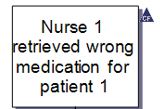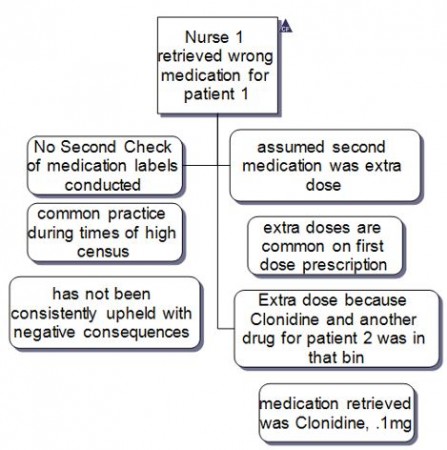Why Healthcare Root Cause Analyses Fail

For many years now the TJC and other governing bodies have required root cause analysis (RCA) on Sentinel events as well as analyses on near misses with high potential. To remain accredited, organizations have put together teams to perform analyses to find the causes and to recommend, implement and track corrective actions. Throughout this time of focus and effort there continue to be repeat sentinel events. So the question that arises is, why are these RCA’s failing?
This question may appear very complex but the root of the problem is actually very simple. From reading many Event reports and examining how many organizations perform these analyses two things stand out to me:
- Many analyses stop at too high a level due to a lack of information and do not reach true root causes. They stop at what we define as a Causal of Contributing factor.
- Many corrective actions don’t address the root cause due to the limited analysis or because the corrective actions created are not specific to changing a particular behavior or system.
What truly makes this even simpler is the fact that these two issues are interrelated. If you don’t thoroughly gather the correct information and identify the true root causes the corrective actions may not be focused enough to fix the problem. We will then fall into the trap of implement general or employee focused corrective actions that don’t address system problems. This can result in wasted time and resources and can have a very negative impact on the people involved in the event.
Here you see an example where the investigator stopped gathering data at a Causal or Contributing Factor.

In this example there was a mistake made by the nurse when retrieving a medication for a particular patient. With no additional information gathered, the investigator is forced to stop at this level. No more analysis can be performed without many assumptions and opinions being used. In this case, when the team moves to corrective actions, how do you fix someone retrieving the wrong medication? Well, without any additional information, we counsel the employee to be more careful, we punish the nurse for making the wrong choice, and/or we retrain everyone to make sure there is an overall understanding of this issue. None of these truly change the system and address the causes of the issue (as you will see below).
If the investigator gathers much more information on the issue there is at least a chance to more thoroughly examine the issue using your RCA tools and dig deeper to a root cause level.

Having this additional data available allows the investigator to dig deeper into the issue to identify the underlying system root causes that contribute to this mistake by the nurse. This changes the focus to the organizational systems and not solely on the individual. Knowing that it has become common practice during high census to not follow the second check rule (or 5 Rights) and there have been no negative consequences consistently provided by management for this issue we would be able to identify system related causes such as Management System ->SPAC Not Used ->Enforcement NI (from the Root Cause Tree®) and other causes. By getting to this level of analysis and understanding the system cause(s), we can now build corrective actions to address specific system issues. By addressing the specific causes and in this case changing the rules or terms around times with a higher than normal census, the requirements for following and consequences for not following this policy we are changing the systems in the organization. By changing the systems we can enact long lasting positive change in the organization and build sustained success and change the behaviors of our employees.
Learn more about TapRooT® here or contact us to find out how TapRooT® is the answer to succeeding in your healthcare root cause analyses.



